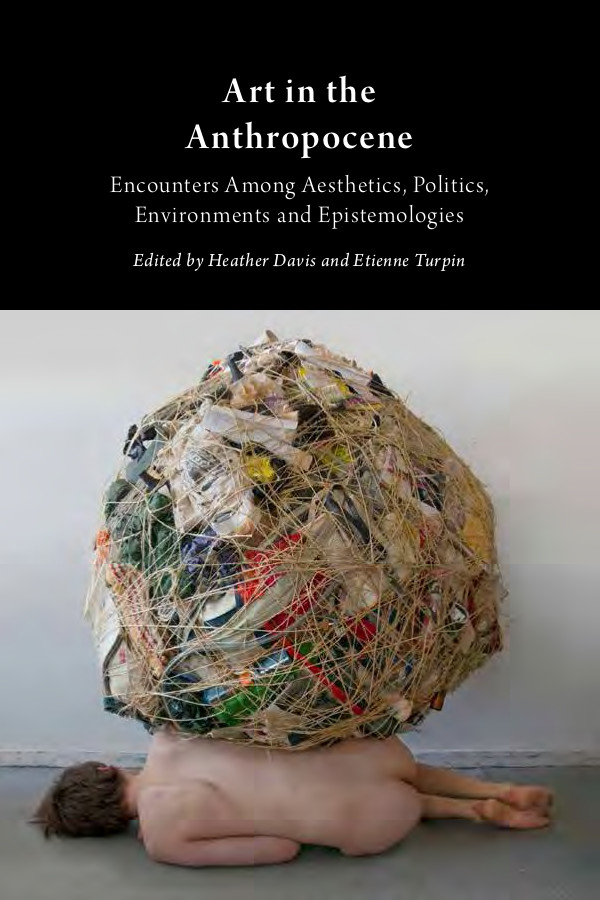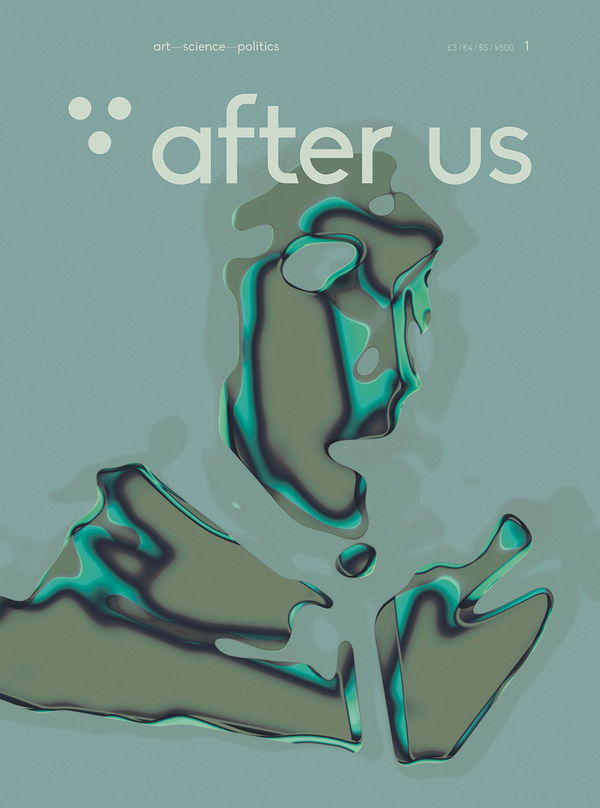Heather Davis, Etienne Turpin (eds.): Art in the Anthropocene: Encounters Among Aesthetics, Politics, Environments and Epistemologies (2015)
Filed under book | Tags: · aesthetics, anthropocene, art, climate crisis, earth, ecology, environment, human, nature, politics, theory

“Taking as its premise that the proposed geologic epoch of the Anthropocene is necessarily an aesthetic event, this book explores the relationship between contemporary art and knowledge production in an era of ecological crisis, with contributions from artists, curators, theorists and activists.”
Contributors include Amy Balkin, Ursula Biemann, Amanda Boetzkes, Lindsay Bremner, Joshua Clover & Juliana Spahr, Heather Davis, Sara Dean, Elizabeth Ellsworth & Jamie Kruse (smudge studio), Irmgard Emmelhainz, Anselm Franke, Peter Galison, Fabien Giraud & Ida Soulard, Laurent Gutierrez & Valérie Portefaix (MAP Office), Terike Haapoja & Laura Gustafsson, Laura Hall, Ilana Halperin, Donna Haraway & Martha Kenney, Ho Tzu Nyen, Bruno Latour, Jeffrey Malecki, Mary Mattingly, Mixrice (Cho Jieun & Yang Chulmo), Natasha Myers, Jean-Luc Nancy & John Paul Ricco, Vincent Normand, Richard Pell & Emily Kutil, Tomás Saraceno, Sasha Engelmann & Bronislaw Szerszynski, Ada Smailbegovic, Karolina Sobecka, Zoe Todd, Richard Streitmatter-Tran & Vi Le, Anna-Sophie Springer, Sylvère Lotringer, Peter Sloterdijk, Etienne Turpin, Pinar Yoldas, and Una Chaudhuri, Fritz Ertl, Oliver Kellhammer & Marina Zurkow.
Publisher Open Humanities Press, 2015
Critical Climate Change series
Creative Commons BY-NC-ND 3.0 license
ISBN 1785420054, 9781785420054
402 pages
Review: Scott Volz (CAA Reviews, 2018).
PDF, PDF, PDF, PDF (12 MB)
More formats (Archive.org)
After Us: Art—Science—Politics, 1 (2015) [English/Spanish]
Filed under magazine | Tags: · accelerationism, aesthetics, art, artificial intelligence, machine, politics, science fiction

“Through essays, pictorials and fiction, After Us hopes to look beyond the horizon, exploring developments in science and technology, new forms and expressions in art, and alternative political thinking. In print and online.”
Contents: Essays by Nora N. Khan on artificial superintelligence, Liam Young on architecture for machines, Nick Srnicek on neoliberalism and aestheticism, Benedict Singleton on modern film archetypes. Interview with Walter Murch by Dave Tompkins. Fiction by Juan Mateos. Art by Timothy Saccenti & Sam Rolfes, Lawrence Lek. Illustrations by Stathis Tsemberlidis, Adam Ferriss, Alex Solman, Patrick Savile.
Publisher Optigram, London, Sep 2015
32 pages
HTML (English, use menu to browse contents)
PDF (English, 10 MB)
HTML (Spanish, expand menu item “translations” to browse contents)
See also Issue 2.
Comments Off on After Us: Art—Science—Politics, 1 (2015) [English/Spanish]Anders Kreuger (ed.): The Welfare State (2015)
Filed under catalogue | Tags: · art, labour, politics, welfare state

“The welfare state is an abstract notion. But also very concrete. Political, but also bureaucratic. What does it have to do with art?
The welfare state operates with regulations, rights and obligations that apply to everyone in the same way, requiring individuals to identify themselves as members of society first and foremost. In this sense, the welfare state is the antithesis of art. Many artists support the welfare state in both theory and practice, and they are fascinated by rules as such, but they have little interest in following rules formulated by others than themselves..
The welfare state is an emancipatory political project, although it was first invented as a way of keeping class struggle and revolution at bay. It is hard to disassociate the European welfare state from the darker elements of recent history, such as militarism, colonialism and the degradation of the natural environment. Yet the welfare state, as a model for social cohesion and political stability, is now gaining ground in new parts of the world, notably in East Asia.
The exhibition The Welfare State does not look back with nostalgia at the welfare state in its ‘classical’ form as a utopian blueprint for an egalitarian (and homogenous) society in postwar Western Europe. It does not invite artists to ‘illustrate’ political and social engagement. But it does ask some fundamental questions. What is the ‘imaginary’ of the welfare state? Does it have a ‘form’? Can it be ‘shown’?”
Contributions by Stephen Willats, Josef Dabernig, Róza El-Hassan, Francisco Camacho Herrera, Anne-Mie Van Kerckhoven, Artūras Raila, Kajsa Dahlberg, and Donna Kukama.
With an introduction by Anders Kreuger
Publisher M HKA, Antwerp, 2015
ISBN 9789072828521
139 pages
PDF (11 MB, updated on 2020-10-19)
EPUB (22 MB, updated on 2020-10-19)

